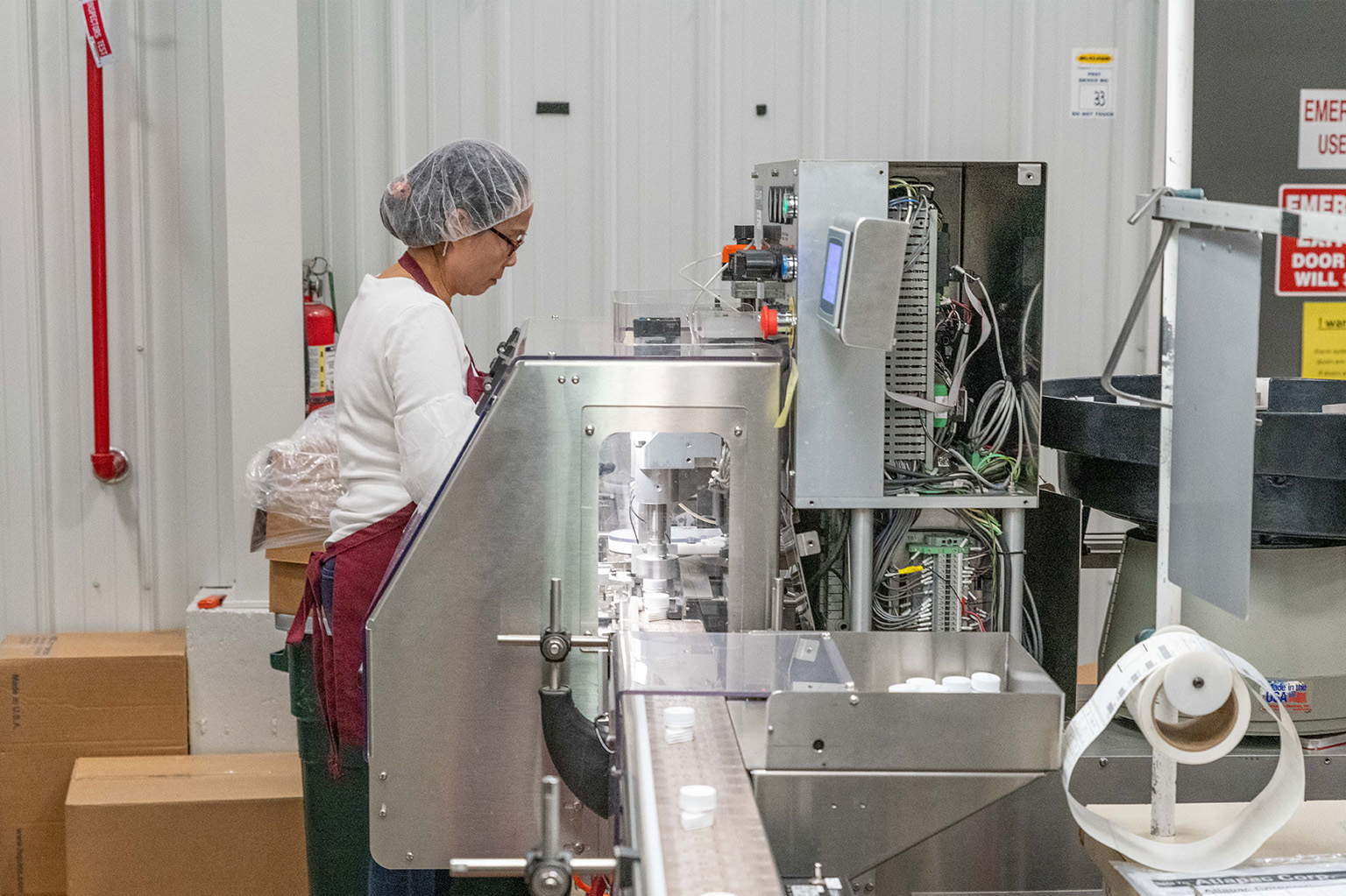Contact us at (630) 820-5550 to see how we can make the difference in your business.
Secondary Operations
Capping

Being a closure manufacturer and a custom injection molder, HQC is sometimes asked to produce both the closure and the container and then manage the assembly.
As an illustration, a medical device manufacturer approached HQC looking to produce a closure from a specific engineering grade of plastic and assemble it with a container. The closure would be a flat seal with no liner so the surfaces would be pressing against each other. For this reason, the correct torque range was required before a shrink wrap could be applied and shrunk around the container and the assembled container could be put into a 100-count package.
All capping operations were performed in one of HQC’s soft-sided clean rooms. We completed the assembly of the closures and containers and then shipped them to be sterilized. From there, the assemblies were sent to the customer to distribute to their consumer. The result was a consistent, well-matched closure for the container go
ing to market. This is just one example of how HQC’s diverse capabilities solve customer challenges in ways a closure manufacturer alone cannot.
We Understand
Because we have capped millions of closures and containers at HQC, we understand exactly what you are talking about when you contact us about a capping issue. We also know how these problems can often appear when a closure or container is capped at a different facility. Whether you need capping operations or a closure or container made to fit proper capping, our experience allows us to relate to your situation and help guide you to an optimal solution.
HQC’s experience applies to flexible packaging both with and without liners as well. When we make pouch fitments (weld spouts), many customers fill through the pouch. Different customers also will want a certain kind of closure for the flexible packaging. For instance, capping with a plug seal and a tamper-evident band might be needed for a water bottle or a cosmetic product. Including the plug seal and tamper-evident band requires very close and tight tolerances to ensure that the seal doesn’t leak and the band doesn’t break when it is installed. Drawing from our extensive work with capping, we can help you define and understand these tolerances.
From there, we can either achieve those tolerances for you or support you in producing a closure or container that will be a proper fit for your capping operations. This contributes to greater consistency for a more manufacturable and marketable product.
These are but examples of how we can reinforce your capping objectives, including for flexible pouches and packaging. When HQC provides your capping, you also reduce scrap material and production complications you may otherwise contend with at your facility.
If you have a project you would like to discuss, we welcome you to contact us to find out how we can accommodate you. We also invite you to visit HQC for a tour of our capping operations so you can gain even greater insight into our resources.